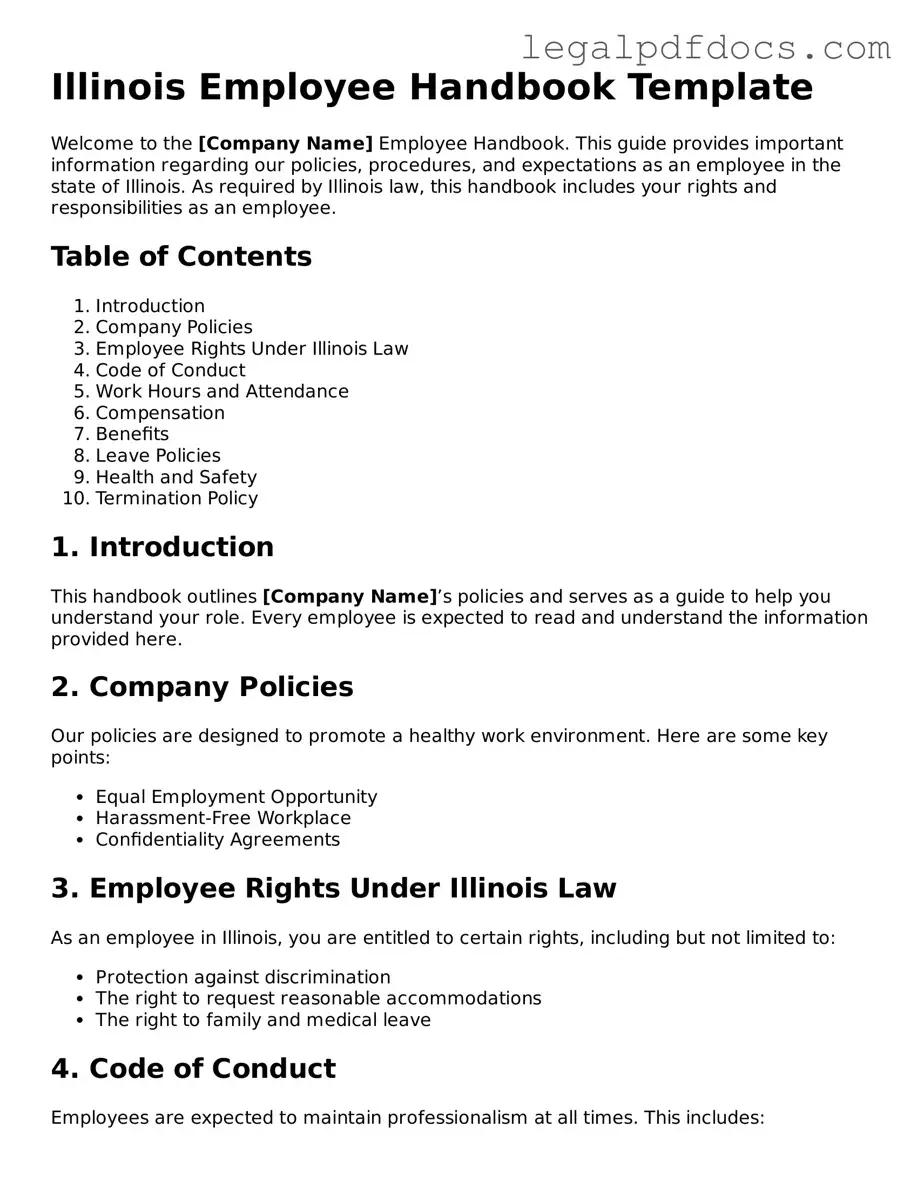Creating a comprehensive employee handbook is a vital step for any business operating in Illinois. This essential document serves not only as a guide for employees but also as a protective measure for employers. An Illinois Employee Handbook typically outlines key policies, procedures, and expectations that help foster a positive workplace culture. It often includes sections on workplace conduct, attendance, and dress code, ensuring that employees understand the standards they are expected to uphold. Additionally, the handbook addresses important topics such as anti-discrimination policies, harassment prevention, and the process for reporting grievances. By clearly defining benefits, leave policies, and disciplinary procedures, the handbook helps to align employees with the company’s goals while also safeguarding their rights. Moreover, an effective employee handbook can serve as a reference point during onboarding, helping new hires acclimate to the company’s values and operational practices. Overall, the Illinois Employee Handbook form is a crucial tool for promoting transparency and fostering a respectful and productive work environment.
